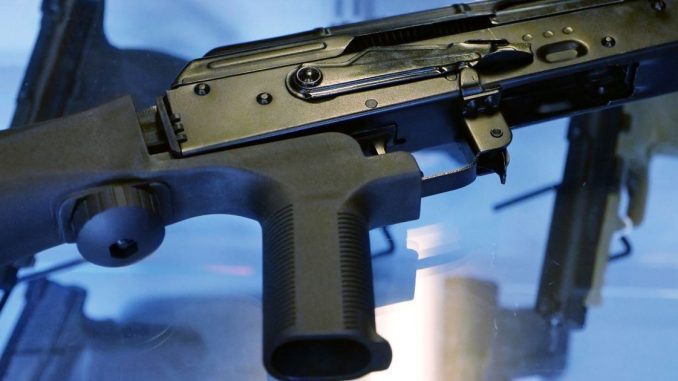
The United States Navy-Marine Corps Court of Criminal Appeals has ruled that bump stocks are not machine guns, going against a 2018 order classifying them as such.
“[T]he President directed the Bureau of Alcohol, Tobacco, Firearms, and Explosives [ATF] to issue a new interpretation of a rule — that contradicted the ATF’s previous interpretation — governing legislation from the 1930s,” the court said regarding former President Donald Trump’s bump stock ban.
The judges added that the change in definition was altered without passing legislation, making the decision legally questionable.
“This Executive-Branch change in statutory interpretation aimed to outlaw bump stocks prospectively, without a change in existing statutes,” the judges continued.
“In 1986, Congress passed the Firearms Owners’ Protection Act [FOPA], banning possession of machine guns not owned before 1986,” they later added.
“FOPA also banned any parts, to include frames and receivers, which were part of a machine gun or were designed for converting a weapon into a machine gun.”
The case, U.S. v. Ali Alkazahg, centers on Marine Corps Pvt. Ali Alkazahg, who was sentenced to three years in “confinement” for attempting to bring illegal firearms onto a Nebraska Air Force base, according to The Associated Press.
Bump stocks allow a shooter to fire a semi-automatic weapon more rapidly but at the cost of accuracy.
The military court’s reasoning followed that of the Sixth Circuit Court of Appeals in a March decision. In Gun Owners of America v. Garland, Judge Alice Batchelder ruled that bump stocks do not meet the definition of machine gun.
“After finding that the ATF’s interpretation was entitled to Chevron deference, the district court held that the Final Rule’s classification of bump stocks as machine guns was ‘a permissible interpretation’ of § 5845(b). Accordingly, the court concluded that Plaintiffs-Appellants were unlikely to succeed on the merits and denied the preliminary injunction,” Batchelder wrote in her opinion.
“Because an agency’s interpretation of a criminal statute is not entitled to Chevron deference and because the ATF’s Final Rule is not the best interpretation of § 5845(b), we REVERSE the district court’s judgment and REMAND for proceedings consistent with this opinion.”
The legal principle of Chevron deference defines when a court should defer to an agency’s interpretation of a law. According to Cornell Law School’s Legal Information Institute, “The scope of the Chevron deference doctrine is that when a legislative delegation to an administrative agency on a particular issue or question is not explicit but rather implicit, a court may not substitute its own interpretation of the statute for a reasonable interpretation made by the administrative agency.”
The ATF’s website still has the non-updated definition of the term “machine gun.”
“The final rule clarifies that the definition of “machinegun” in the Gun Control Act (GCA) and National Firearms Act (NFA) includes bump-stock-type devices, i.e., devices that allow a semiautomatic firearm to shoot more than one shot with a single pull of the trigger by harnessing the recoil energy of the semiautomatic firearm to which it is affixed so that the trigger resets and continues firing without additional physical manipulation of the trigger by the shooter,” the website states, citing the Trump administration rule that went into effect in March 2019.
The ruling comes at an awkward time for the ATF as President Joe Biden on Thursday rescinded his nomination of David Chipman to lead the agency due in part to his strong connection to gun control advocacy.
Between the ruling on bump stocks and the possibility of Chipman becoming the ATF leader gone, supporters of the Second Amendment have reason to cheer.
Politicians on both sides of the aisle do not always understand the importance of gun rights, which is why it is critical to have a justice system that errs on the side of freedom.
